The Fractal Design Node 202 Case Review: Mini-ITX Gaming For the Living Room
by E. Fylladitakis on June 6, 2016 9:15 AM EST- Posted in
- Cases/Cooling/PSUs
- Mini ITX
- HTPC
- Fractal Design
- ITX
The Interior of the Fractal Design Node 202
The removal of the top cover is an easy process, as the panel comes off after the removal of its holding screws from the bottom of the case. This is also necessary for the user to gain access to the top air filter, as it is attached to the inside of the top cover.
The lower cover can also be removed, and has to be removed in order to access the lower intake filters beneath the video card and the PSU. This cover is not held with screws but with plastic clips, allowing it to come off after undoing them one-by-one. After the cover has been removed, the magnetic filters can be removed from the bottom of the case.
Fractal Design essentially ditched 5.25” and 3.5” devices completely and organized the interior of their case so as to fit a standard gaming system with a full size video card. The interior is essentially split into two areas, one for the motherboard and the PSU to the right and one for the video card to the left. The two areas are split by a steel support wall.
The PSU compartment is small, allowing the use of SFX units up to 130 mm long. In order to install the PSU, the frame needs to be removed, attached to the unit and then reinstalled along with the PSU.
An ITX motherboard just barely fits inside the Node 202, with minimal space around the board for cable management. After the PSU has been installed, managing the cables using the cable ties is a somewhat tedious process. There is little clearance for a cooler and only coolers up to 56 mm tall may fit, which can cause compatibility problems even with some high-performance stock coolers. There is also no slot for a low profile card and expansion cards can only be installed by using the supplied PCI Express riser card.
Only two 2.5” drives can be installed in the Node 202, on the metallic drive cage that is attached to the middle support wall between the compartments. The cage is designed so that one drive will be in the left compartment and the other drive will be in the right compartment. The support wall has an opening where the cage is installed, allowing the passage of cables for the drive in the left compartment of the case.
The most important feature of the Node 202 is its capability to support full size PCI Express video cards. However, there are limitations. The card can only be up to 310 mm long and up to 50 mm thick, if no intake fans have been installed beneath the card (or if 10 mm low profile fans were installed). If 120 mm × 25 mm intake fans are installed, the thickness of the card is limited to 35 mm. Although these may sound constrictive, the vast majority of mainstream gaming cards do fit in the Node 202 (ed: a reference GeForce GTX 1080 would be 266mm long). The small number of custom, top tier cards that do not fit would also be incompatible with the low power output of the supported SFX PSUs and possibly cause thermal issues as well.
Fractal Design has also placed a support for the card that can be adjusted via a screw at the bottom of the case. This may seem redundant for when the case is placed horizontally, but vertical placement could have a heavy card slipping out of the PCI Express slot, so the case design takes this into account.
An overall look with a system inside the Node 202 reveals that the build will be tight, with little room for cable management or modifications. It may be wise to select either Fractal Design’s own Integra SFX 450W PSU, which has been designed with this specific case in mind, or a modular SFX PSU.
Regardless the tight fit, a gaming system using an efficient CPU and mainstream video card, along with one or two SSDs, does fit in the Node 202 without issues, creating a very good gaming system. However, this is essentially the sole purpose of the case. If an expansion card is not installed (e.g. the user is content with integrated graphics) then the left compartment essentially is a dead area. No advanced liquid cooling solutions can be installed due to the wall separating the compartments and there is no way to support 3.5” drives without modifying the case. This prevents the Node 202 from being used as a file server or as a HTPC with large internal drives hosting media collections.


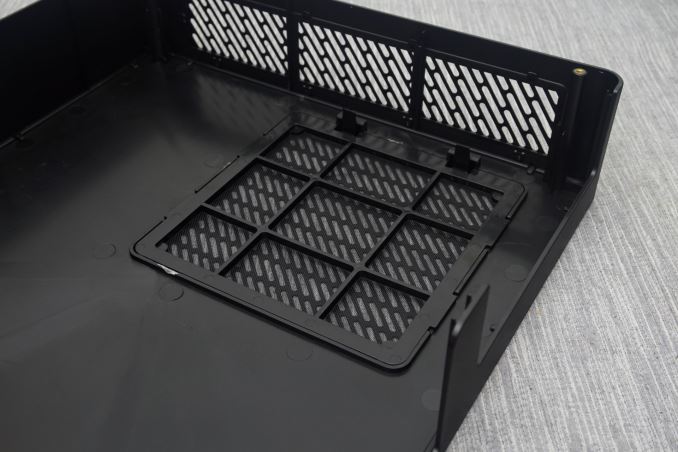
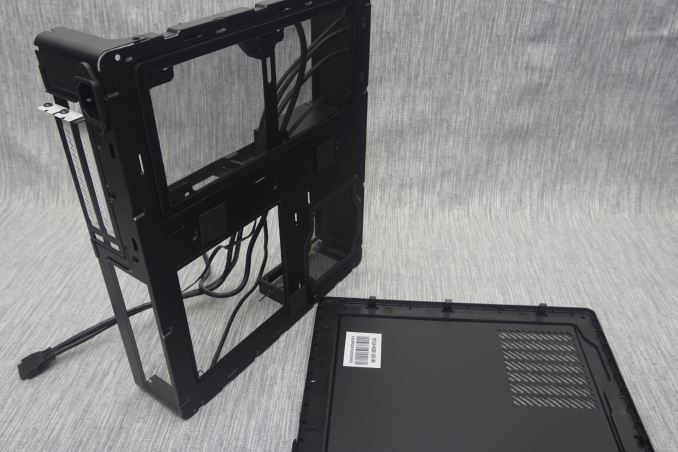
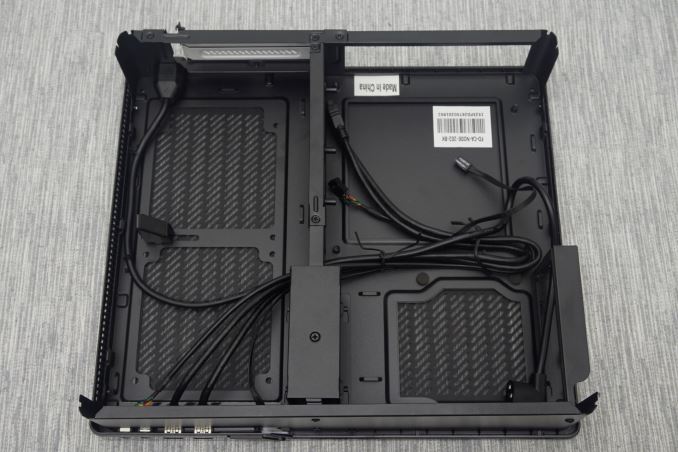
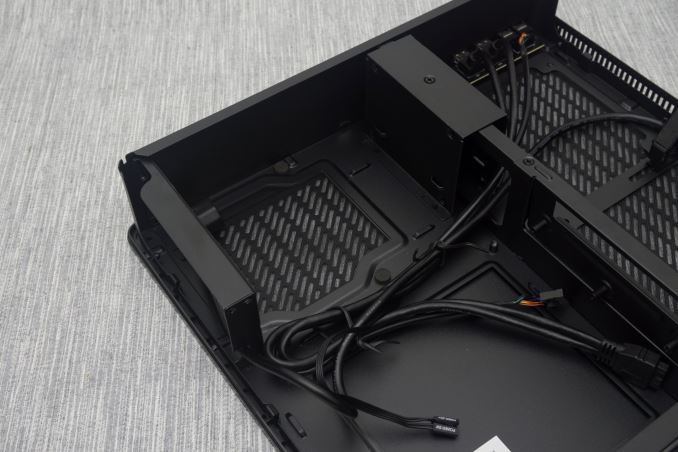

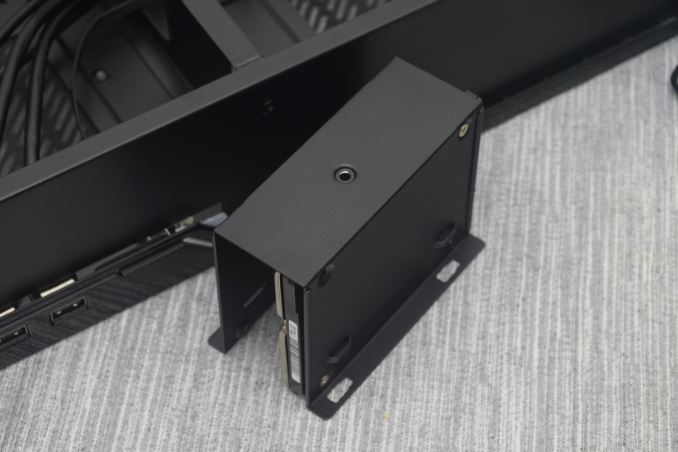
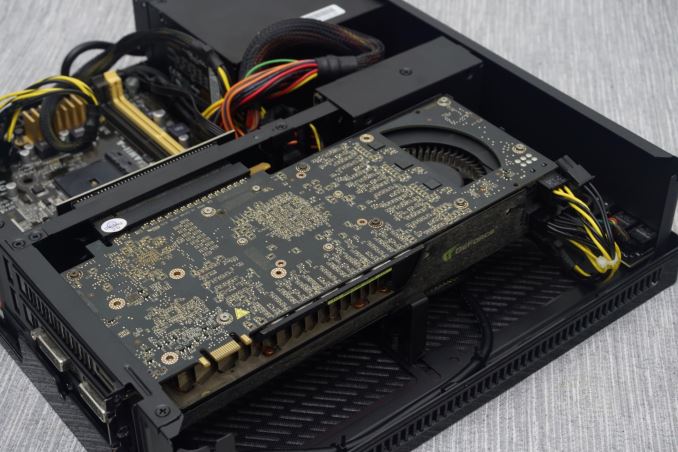
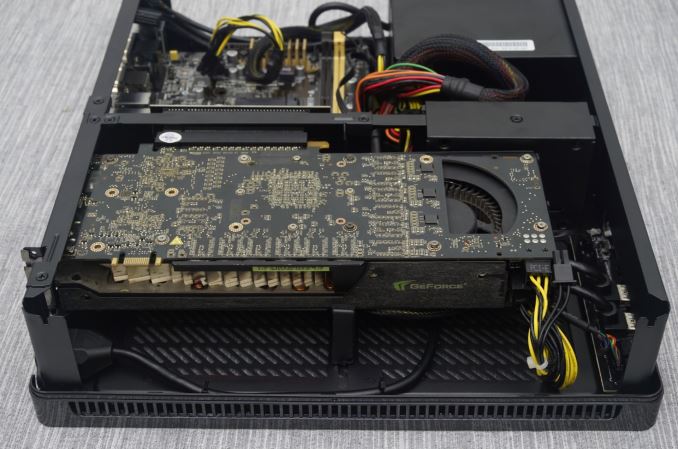
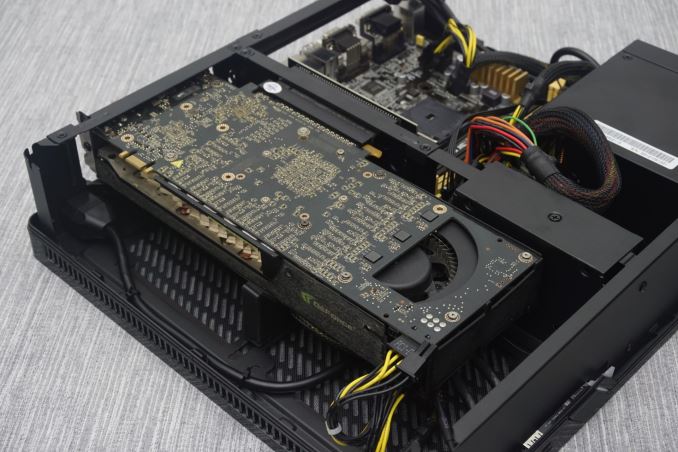
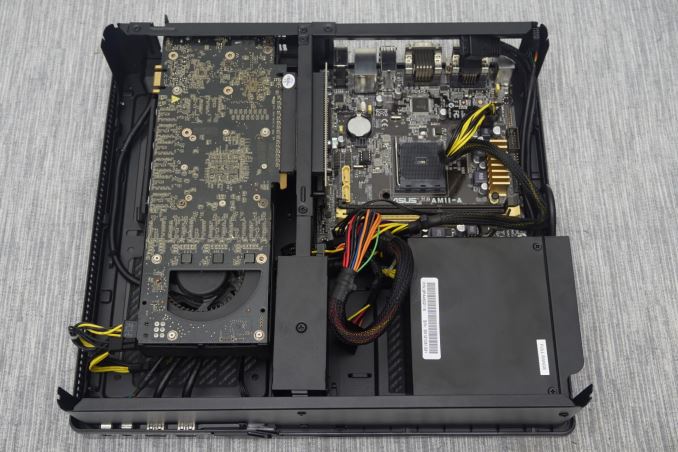








64 Comments
View All Comments
ES_Revenge - Friday, June 17, 2016 - link
Sooo....basically the same layout as an RVZ-01E but with more elegant looks (flat surfaces, wrapped corners). Gotcha. Good news is it doesn't look like every other Fractal Design case out there, lol.rburnham - Friday, January 13, 2017 - link
This seems like a less gaudy version of Alienware's R3 line of PCs if you stand it up vertically. This is exactly what I need in a gaming PC. Enough room for only what I need.By the way, in the Testing segment of the article, there is a sentence that reads "However digging deeper, it's clear that the is designed to assist the cooling systems of the installed devices..." There's a word missing there.
Mark Davis - Monday, December 25, 2017 - link
Hey man, first of all, I need to thank you for this amazing review of Node 202. I enjoyed the whole time reading about this case. It is the very nice case, but I think it isn't the best in this market.Design of Node 202 is amazing in my opinion. I really love the clean and simple design, colored in matte black. It looks more like a console than like a PC. However, I saw some pretty powerful gaming rigs inside this bad boy. But, as you mentioned in the review, it is more for casual gaming PCs that stands in the living room.
I love the fact that you can position the case both horizontal and vertical. It makes a fitting job a lot easier, but I think that logo looks a little weird when the case is positioned vertically. However, I am probably the only guy that cares about that. I also saw guys that put PC in this case right next to PS4. It looks so cool, trust me!
I think inside of the case is also pretty nice. It has enough space for decent size components. I built gaming PC in small cases a couple of times, and I can say that it is a complitely new experience. It is very different, and I recommend to everyone to try it out.
I love mini ITX cases because they are also easy to transport, and I can easily travel with them from one place to another. I had a couple friends that loved LAN parties, so they also needed small PCs in most cases.
All in all, I love your review, and I think you mentioned everything about this case. This was all I needed to learn about Node 202. I will definitely read other reviews on your website and hopefully learn something new.
I also wanted to share my own blog where I talk about technology. I have article around similar topic, but I talked about many mini ITX cases. If you have a couple minutes, I would like to have your feedback.
You can find it here: https://safetygaming.com/best-mini-itx-cases/
All the best!
hmazuji - Wednesday, April 3, 2019 - link
my experience with the node 202:first off, this is for the developers, for fractal design, not intended to put off the enthusiastic apprentice from pursuing their goal:
i am building a asrock b450 itx. 1. this case will not host the amd 1700/2700 processor with non-optional heatstock fan & block. i ended up having to order a smaller footprint fan, but managed to salvage the heatsink block. please redesign the case to accommodate the amd line of processors. 2. the cable management of this case is horrid. i mean to say, it is abysmal. used a modular seasonic platinum power supply that i had to cut and splice to eliminate the extra yardage. to make this case work, fractal design needs to include such a power supply but with proprietary cables made for this case. for example, the power cables to the motherboard need to be streamlined to eliminate every single inch of overage. this case needs its own, and should ship with its own cables. 3. don't make the power supply optional. placing a seasonic in this case was a feat of engineering instead of plug and chug
my build is up and running, it just could have been a lot easier. i would recommend the fractal design define s over the node 202, but there it is the exact opposite. my node s build looks like an empty box with plenty of room for a dvd/blue rw drive, so i wasn't able to port my optical drive from my old system, even though it would have been useful, for example, watching movies, or installing windows 7, because windows 7 out of the box does not support usb 3